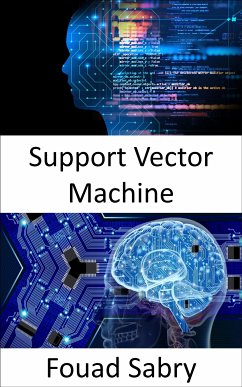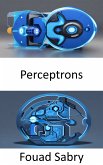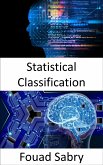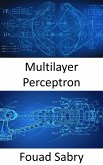What Is Support Vector Machine
In the field of machine learning, support vector machines are supervised learning models that examine data for classification and regression analysis. These models come with related learning algorithms. Vladimir Vapnik and his coworkers at AT&T Bell Laboratories were responsible for its creation. Because they are founded on statistical learning frameworks or the VC theory, which was developed by Vapnik and Chervonenkis (1974), support vector machines (SVMs) are among the most accurate prediction systems. A non-probabilistic binary linear classifier is what results when an SVM training algorithm is given a series of training examples, each of which is marked as belonging to one of two categories. The algorithm then develops a model that assigns subsequent examples to either one of the two categories or neither of them. The support vector machine (SVM) allocates training examples to points in space in such a way as to maximize the difference in size between the two categories. After that, new examples are mapped into that same space, and depending on which side of the gap they fall on, a prediction is made as to which category they belong to.
How You Will Benefit
(I) Insights, and validations about the following topics:
Chapter 1: Support vector machine
Chapter 2: Linear classifier
Chapter 3: Perceptron
Chapter 4: Projection (linear algebra)
Chapter 5: Linear separability
Chapter 6: Kernel method
Chapter 7: Sequential minimal optimization
Chapter 8: Least-squares support vector machine
Chapter 9: Hinge loss
Chapter 10: Polynomial kernel
(II) Answering the public top questions about support vector machine.
(III) Real world examples for the usage of support vector machine in many fields.
(IV) 17 appendices to explain, briefly, 266 emerging technologies in each industry to have 360-degree full understanding of support vector machine' technologies.
Who This Book Is For
Professionals, undergraduate and graduate students, enthusiasts, hobbyists, and those who want to go beyond basic knowledge or information for any kind of support vector machine.
In the field of machine learning, support vector machines are supervised learning models that examine data for classification and regression analysis. These models come with related learning algorithms. Vladimir Vapnik and his coworkers at AT&T Bell Laboratories were responsible for its creation. Because they are founded on statistical learning frameworks or the VC theory, which was developed by Vapnik and Chervonenkis (1974), support vector machines (SVMs) are among the most accurate prediction systems. A non-probabilistic binary linear classifier is what results when an SVM training algorithm is given a series of training examples, each of which is marked as belonging to one of two categories. The algorithm then develops a model that assigns subsequent examples to either one of the two categories or neither of them. The support vector machine (SVM) allocates training examples to points in space in such a way as to maximize the difference in size between the two categories. After that, new examples are mapped into that same space, and depending on which side of the gap they fall on, a prediction is made as to which category they belong to.
How You Will Benefit
(I) Insights, and validations about the following topics:
Chapter 1: Support vector machine
Chapter 2: Linear classifier
Chapter 3: Perceptron
Chapter 4: Projection (linear algebra)
Chapter 5: Linear separability
Chapter 6: Kernel method
Chapter 7: Sequential minimal optimization
Chapter 8: Least-squares support vector machine
Chapter 9: Hinge loss
Chapter 10: Polynomial kernel
(II) Answering the public top questions about support vector machine.
(III) Real world examples for the usage of support vector machine in many fields.
(IV) 17 appendices to explain, briefly, 266 emerging technologies in each industry to have 360-degree full understanding of support vector machine' technologies.
Who This Book Is For
Professionals, undergraduate and graduate students, enthusiasts, hobbyists, and those who want to go beyond basic knowledge or information for any kind of support vector machine.
Dieser Download kann aus rechtlichen Gründen nur mit Rechnungsadresse in A, B, BG, CY, CZ, D, DK, EW, E, FIN, F, GR, H, IRL, I, LT, L, LR, M, NL, PL, P, R, S, SLO, SK ausgeliefert werden.









